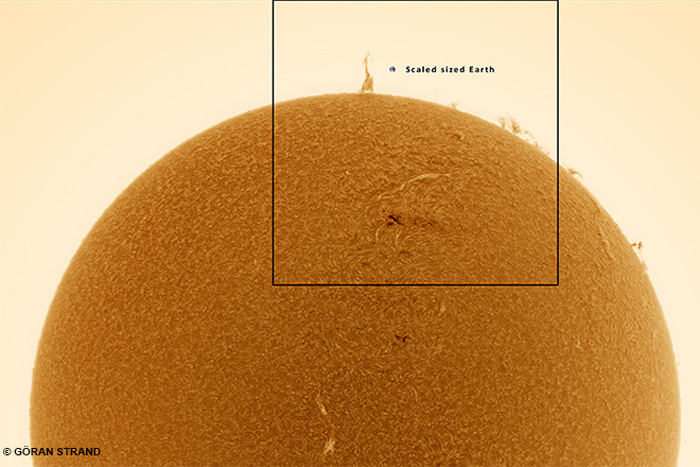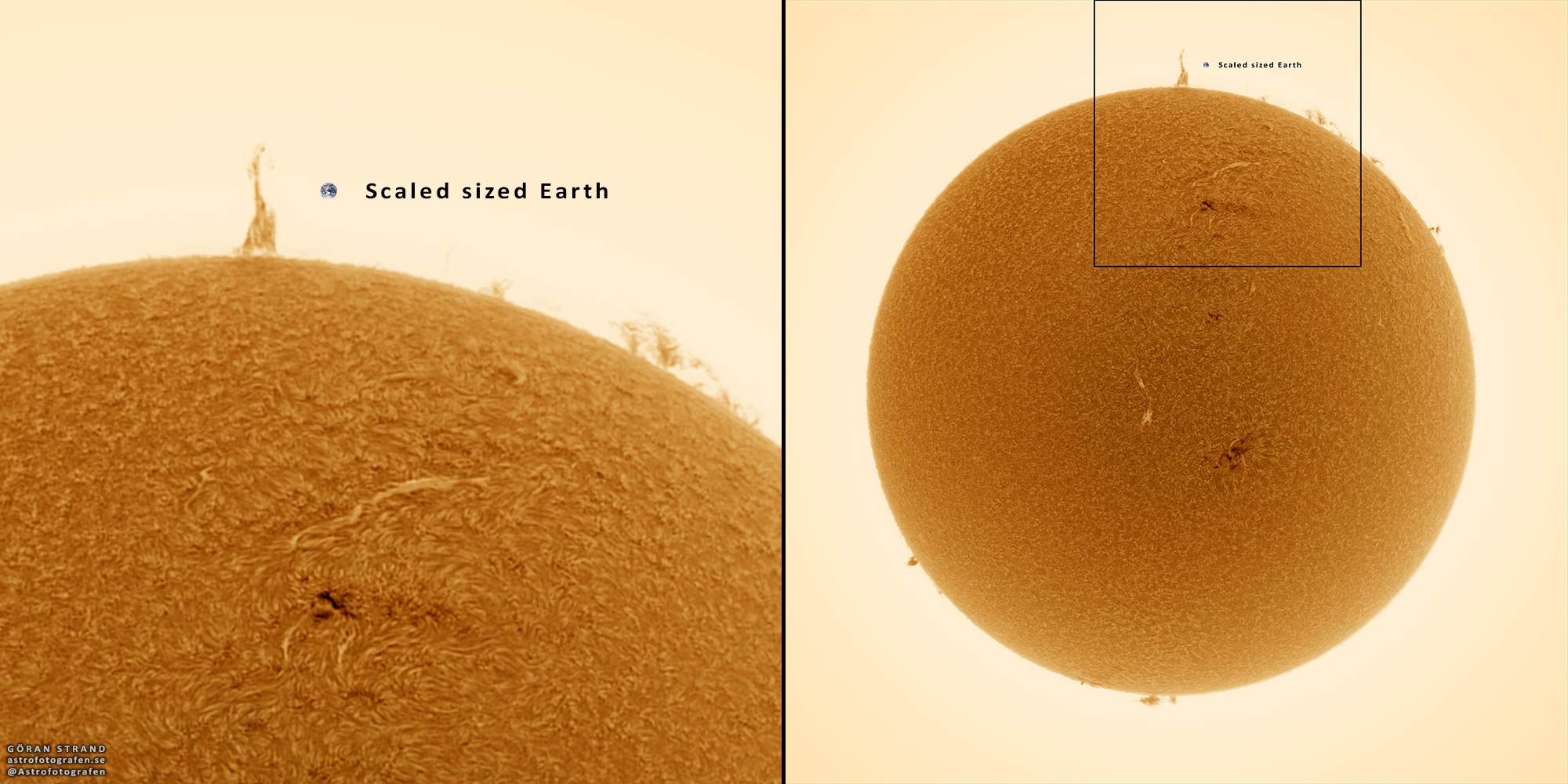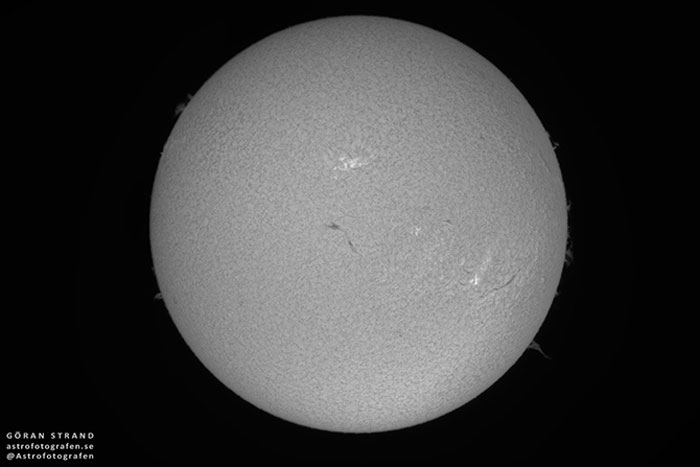'Eiffel Tower' Prominence Towers Over The Sun

From his backyard in Östersund, Sweden, professional photographer and astrophotographer Göran Strand took a look at the sun using his portable solar telescope “to see if something interesting was going on.” And sure enough, there was something VERY interesting going on. Something was towering over the solar disk — something that looked like… the Eiffel Tower?
Of course, this isn’t the famous Parisian landmark, nor is it some Photoshop trickery; the structure Strand had spotted was a solar prominence, and a beautiful one at that.
PHOTOS: Simmering Solar Views from SDO
“This big prominence got my attention right away, even in my small 50mm telescope it was a beautiful sight,” Strand told Discovery News via email. “While setting up my bigger solar telescope I thought of how the prominence looked and that it reminded me of the Eiffel Tower in Paris.”
Using a larger Lunt 80mm hydrogen alpha pressure-tuned solar telescope hooked up to a Point Grey Grasshopper 3 camera, he captured a thousand photos and stacked the best 300 shots to produce this mesmerizing solar portrait:

In the final image, the size of the Earth has been added to give a sense of scale. A rough comparison suggested that this prominence is approximately 7-Earth diameters high, reaching high into the sun’s atmosphere (the corona).
NEWS: Sun Unleashes Spectacular Solar Eruption
Sign up for the Live Science daily newsletter now
Get the world’s most fascinating discoveries delivered straight to your inbox.
Prominences are large structures of magnetized plasma that can erupt from the sun’s chromosphere and arc high into the corona. As the plasma in the sun’s corona can have temperatures exceeding a million degrees Kelvin (Celsius), the plasma in prominences can be a hundred times cooler, at a similar temperature to the chromosphere.
As they are cooler than the surrounding corona, they generate visible light and can therefore be spotted fairly easily though specialized equipment such as solar telescopes and eclipse glasses. (NOTE: Never look directly at the sun as serious eye injuries and even blindness can result.)
Also, as the sun is rich in ionized hydrogen, astronomers use hydrogen alpha (or H-α) filters to produce observations of stunning detail of prominences and chromospheric features on the solar disk.
PHOTOS: The Psychedelic Anatomy of a Solar Flare
For more of Strand’s outstanding work, check out his website, Instagram, Twitter and Facebook.

Originally published on Discovery News.









